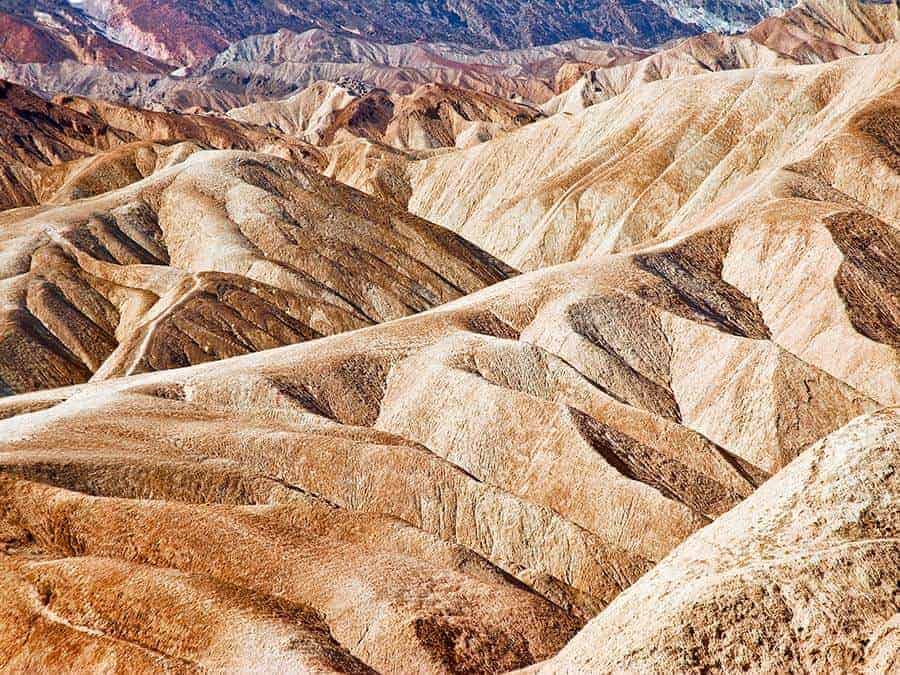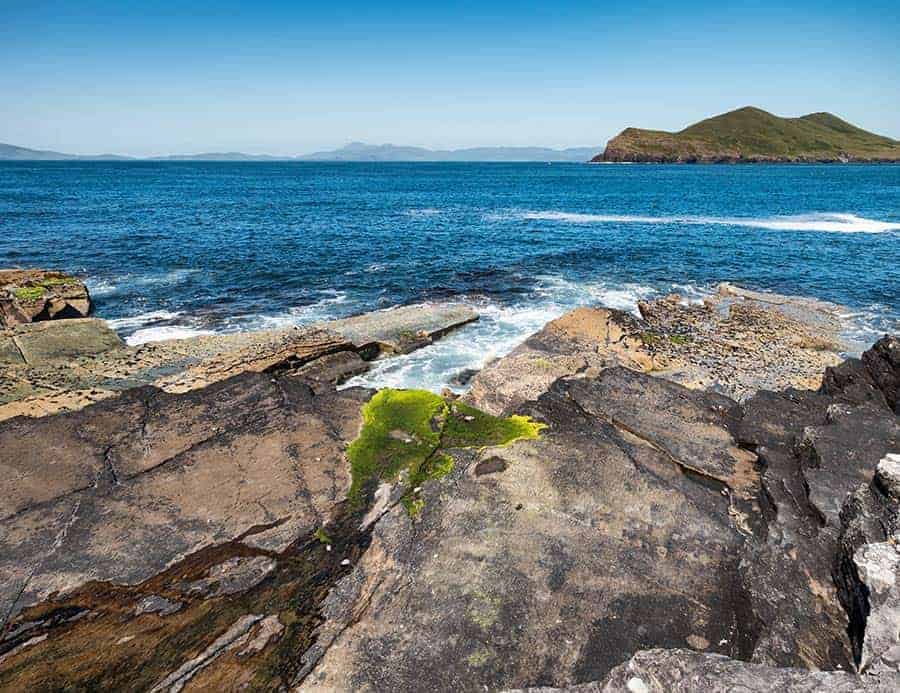Flash floods in the desert
Valentia Slate is a sedimentary rock that formed 385 million years ago in an environment similar to Death Valley in California today. In a desert environment, occasional flash floods washed rocks, sand and silt from the eroding mountains into a nearby flood plain and these rivers then distributed the eroded material for tens of kilometres across the plain. In some places the material was composed of sand and gravel but further from the mountains, only the finer material made it that far. Each layer (called a “bed” by geologists) can, in simple terms, be linked to a flash flood one day 385 million years ago.
Much like parts of Death Valley today, a geological fault separated the lower land from the mountains and the lower land was sinking. As the land sank, over many millions of years, the sediment built up until it was several kilometres thick. The rate of accumulation has been estimated as an average of a tenth of a millimetre per year – this gives an impression of the very long periods of time involved. These rocks now make up most of South Kerry and are known as the Old Red Sandstone. The lowest part of the Old Red Sandstone that is visible today is called the Valentia Slate Formation and it is within these rocks that the Valentia Slate Quarry is located.
Flash floods in the desert
Valentia Slate is a sedimentary rock that formed 385 million years ago in an environment similar to Death Valley in California today. In a desert environment, occasional flash floods washed rocks, sand and silt from the eroding mountains into a nearby flood plain and these rivers then distributed the eroded material for tens of kilometres across the plain. In some places the material was composed of sand and gravel but further from the mountains, only the finer material made it that far. Each layer (called a “bed” by geologists) can, in simple terms, be linked to a flash flood one day 385 million years ago.
Much like parts of Death Valley today, a geological fault separated the lower land from the mountains and the lower land was sinking. As the land sank, over many millions of years, the sediment built up until it was several kilometres thick. The rate of accumulation has been estimated as an average of a tenth of a millimetre per year – this gives an impression of the very long periods of time involved. These rocks now make up most of South Kerry and are known as the Old Red Sandstone. The lowest part of the Old Red Sandstone that is visible today is called the Valentia Slate Formation and it is within these rocks that the Valentia Slate Quarry is located.

Plate tectonics
Fossils at Valentia
Volcanoes on Valentia
The area around the quarry and Valentia Harbour have volcanic rocks from volcanoes that were active at the same time as the Old Red Sandstone was deposited. On Beginish it is possible to see the same kind of rocks and patterns that are so familiar from the Giants Causeway but the Beginish rocks are older by more than 300 million years!
Plate tectonics
Fossils at Valentia
Volcanoes on Valentia



